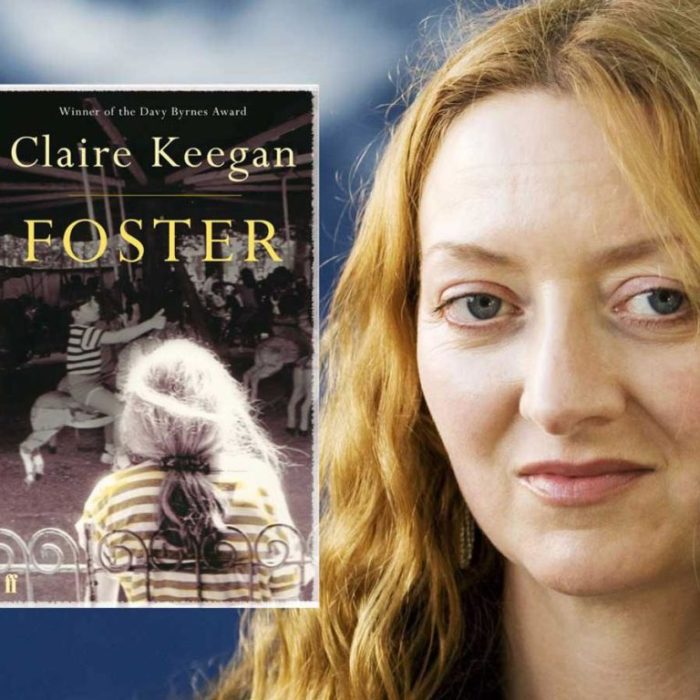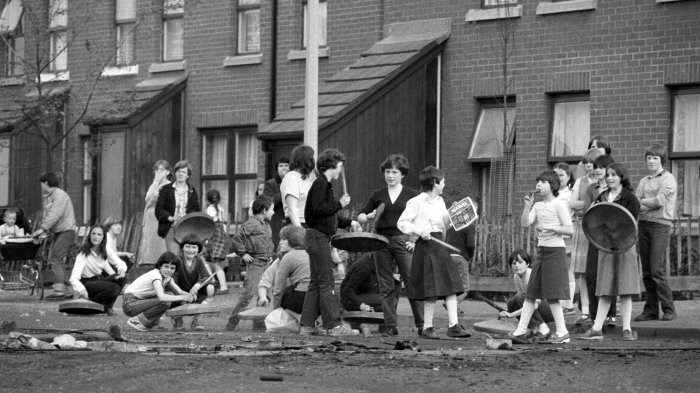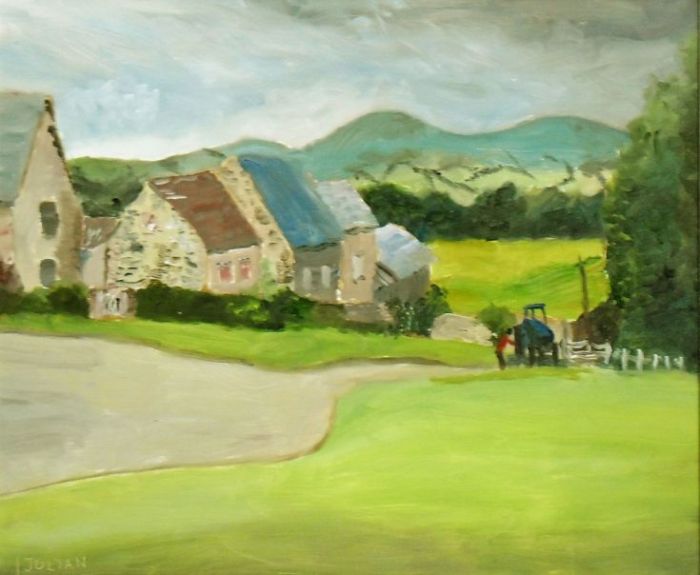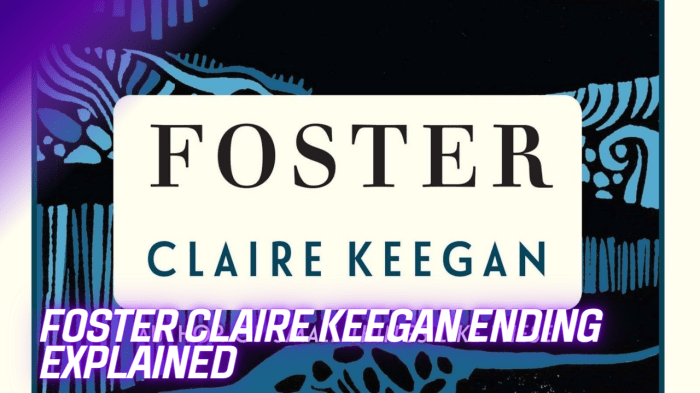Foster by claire keegan ending – In Claire Keegan’s poignant short story, “Foster,” the ending leaves a lasting impact, delving into the complexities of loss, grief, and the enduring power of human connection. Join us as we unravel the profound themes and explore the unforgettable characters at the heart of this moving tale.
Through a series of flashbacks and introspective reflections, Keegan paints a vivid portrait of Baba, a foster mother grappling with her past and the complexities of her present relationships. The story unfolds in a lyrical and evocative style, inviting readers to immerse themselves in the emotional depths of its characters.
Character Analysis of Baba

Baba, the central figure in “Foster,” is a complex and multifaceted character. Her past experiences have profoundly shaped her present actions, her relationships with her children, and her motivations and desires.
Baba’s Past and its Impact
Baba’s childhood was marked by poverty, abuse, and neglect. These experiences instilled in her a deep sense of insecurity and a desperate desire for stability and control. As a result, she is often harsh and unforgiving towards her children, seeing them as a threat to her own well-being.
Baba’s Relationship with Her Children
Baba’s relationship with her children is strained and often hostile. She sees them as burdens rather than blessings, and her treatment of them is often cruel and neglectful. However, there are moments when Baba’s facade cracks, revealing a glimmer of love and compassion for her children.
These moments are fleeting, but they hint at a hidden vulnerability beneath Baba’s tough exterior.
Baba’s Motivations and Desires
Baba’s primary motivation is survival. She is driven by a deep-seated fear of poverty and abandonment, and she will do whatever it takes to secure her own well-being. Her desires are simple: she wants a stable home, food on the table, and a sense of control over her life.
Symbolism of the House: Foster By Claire Keegan Ending

The house in “Foster” by Claire Keegan serves as a potent symbol of Baba’s inner world, reflecting her complex emotions and transformation throughout the story.
The House as a Place of Comfort
Initially, the house represents a place of comfort and refuge for Baba. It is described as “warm and close” and filled with familiar scents and sounds. The house provides Baba with a sense of security and stability amidst the uncertainties of her life.
The House as a Place of Confinement
However, as the story progresses, the house also becomes a symbol of confinement and oppression. The walls seem to close in on Baba, suffocating her and restricting her freedom. The house becomes a prison that traps her in a cycle of poverty and despair.
The Changes to the House
The changes that occur to the house over time parallel Baba’s own transformation. As Baba ages and her circumstances change, the house reflects her inner turmoil. It becomes more dilapidated and run-down, mirroring Baba’s own physical and emotional decline.
The House as a Reflection of Baba’s Inner World
Ultimately, the house in “Foster” serves as a powerful reflection of Baba’s inner world. It is a symbol of both her longing for comfort and her entrapment in a life of hardship. The house is a tangible representation of Baba’s complex emotions and the challenges she faces throughout her life.
The Foster ending left me pondering the complexities of family dynamics. Seeking a change of pace, I turned to Ethan Frome, Chapter 7 summary . While vastly different in setting and characters, both works explore the enduring impact of relationships on our lives.
Returning to Foster, I couldn’t help but draw parallels between the characters’ struggles and my own.
Theme of Loss and Grief

The story “Foster” by Claire Keegan is a poignant exploration of loss and grief. The characters in the story experience various types of loss, which shape their relationships and their outlook on life. This loss can be physical, emotional, or psychological, and it can have a profound impact on the characters’ lives.
Loss of a Loved One
One of the most significant losses experienced by the characters in the story is the loss of a loved one. Baba loses her husband, and the children lose their mother. This loss is a devastating blow to the characters, and it leaves them feeling lost and alone.
They struggle to come to terms with their loss, and they often feel overwhelmed by grief.
The loss of a loved one can lead to a variety of emotions, including sadness, anger, guilt, and denial. The characters in the story experience all of these emotions, and they struggle to find ways to cope with their grief.
Some of them turn to unhealthy coping mechanisms, such as drinking or gambling, while others find solace in their relationships with others.
Loss of Innocence
Another type of loss experienced by the characters in the story is the loss of innocence. The children in the story are exposed to the harsh realities of life at a young age, and they lose their innocence as a result.
They witness their mother’s death, and they are forced to live with a foster family who does not always treat them well. This loss of innocence has a profound impact on the children, and it shapes their view of the world.
The loss of innocence can be a painful experience, but it can also lead to growth and maturity. The children in the story learn to cope with their loss, and they develop a resilience that will help them to face the challenges of life.
Loss of Hope
The characters in the story also experience a loss of hope. Baba loses hope for a better life, and the children lose hope for a happy future. This loss of hope is a result of the many losses that the characters have experienced.
They have lost loved ones, they have lost their innocence, and they have lost their faith in the future. This loss of hope leaves the characters feeling empty and hopeless.
The loss of hope can be a devastating experience, but it is not always permanent. The characters in the story find ways to regain their hope, and they learn to believe in the future again. They find hope in their relationships with others, and they find hope in their own strength and resilience.
Exploration of Poverty and Social Class

Baba and her family live in extreme poverty, which significantly impacts their daily lives and opportunities. They reside in a dilapidated cottage, often cold and damp, with limited access to basic amenities such as running water and electricity.
Economic Conditions, Foster by claire keegan ending
- Baba and her husband are subsistence farmers, struggling to produce enough food for their family.
- Their income is meager, and they rely on odd jobs and seasonal work to supplement their earnings.
- They are deeply in debt and constantly at risk of eviction from their home.
Social Conditions
- Baba and her family are marginalized by the local community due to their poverty.
- They are often treated with disdain and pity, which further isolates them.
- Their children face discrimination in school and have limited access to education.
Impact on Relationships
Poverty has a profound impact on the characters’ relationships. Baba and her husband are constantly stressed and anxious about their financial situation, which strains their marriage.
The children are aware of their family’s poverty and feel ashamed and embarrassed. They often withdraw from social interactions, fearing ridicule or judgment.
Narrative Structure and Style

The narrative structure of “Foster” is distinctive and impactful. The story unfolds in a non-linear fashion, alternating between the present and the past. This structure allows the author to gradually reveal the protagonist’s past and its influence on her present situation.
Use of Flashbacks
Flashbacks are a crucial element of the story, transporting the reader to the protagonist’s childhood. These flashbacks provide insight into her experiences with her foster family and the events that shaped her. The juxtaposition of past and present highlights the enduring impact of trauma and the ways in which it continues to shape the protagonist’s life.
Foreshadowing
Foreshadowing is also employed throughout the story. Subtle hints and allusions hint at the protagonist’s troubled past and the events that will transpire. This technique creates a sense of anticipation and suspense, drawing the reader deeper into the protagonist’s world and her struggle.
Writing Style
Claire Keegan’s writing style is characterized by its simplicity and evocative power. Her prose is lyrical and sparse, capturing the raw emotions and experiences of her characters. The use of sensory details and vivid imagery creates a deeply immersive reading experience, allowing the reader to fully engage with the protagonist’s journey.
Top FAQs
What is the significance of the house in “Foster”?
The house serves as a symbol of Baba’s inner world, reflecting her past traumas and her struggle to create a home for herself and her foster children.
How does Baba’s relationship with her children evolve throughout the story?
Initially distant, Baba gradually forms a deep bond with her foster children, finding solace and purpose in their care.
What are the different types of loss experienced by the characters in “Foster”?
The characters experience the loss of loved ones, the loss of innocence, and the loss of hope.